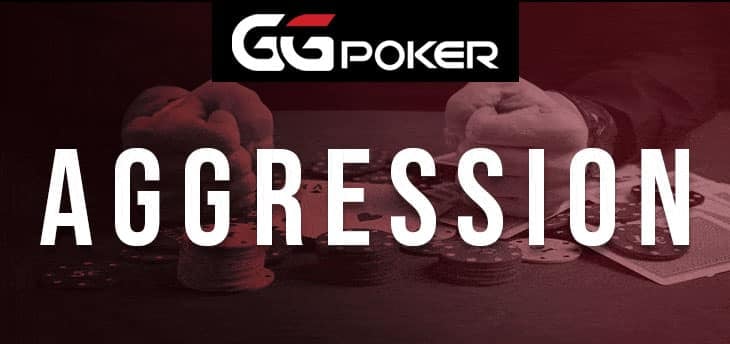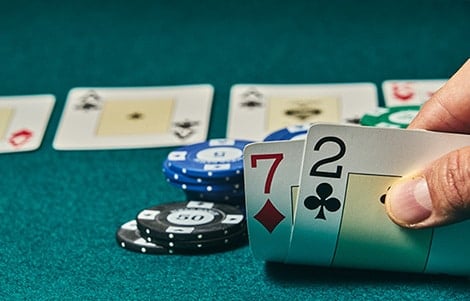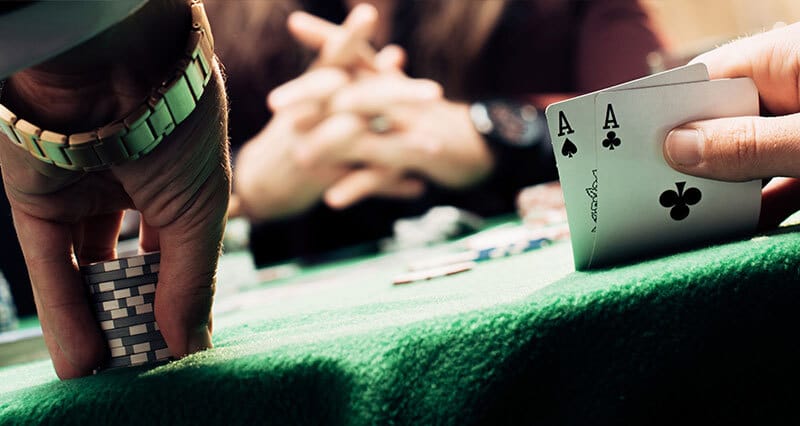Meet your Opponent: Part 2 – The Loose-Aggressive Player (LAG)

Beat your Opponent: Part 2 – The Loose-Aggressive Player
On a wonderful and relaxed Saturday, you decide to play some online poker and jump into the action in the GGMasters Bounty $105. You find your opponents in the poker room to be all very loose and very aggressive no matter what he community cards are. Many of your pre-flop openings, whether it is a big or small bet, see action, and the villains are fighting for every pot. How are you going to handle this situation? Do you stick with your regular Texas Holdem poker game strategy? What adjustments, if any, should be made against this style of poker player?
A Strong Checking Range
Constructing a strong checking range at the poker table is essential when you want to beat loose-aggressive players (LAGS). In the first betting round, you open Under-the-Gun (UTG) and your LAG opponent calls from the button. The flop comes down As-8s-2d. In this scenario, you could opt to check 100% of your range on the flop, even when your hole cards are K-Q of the same suit. The Expected Value (EV) loss for a pure flop check strategy from Out of Position (OOP) is very minimal. Many professionals will combine a check in this position with either a very wide check-raising strategy in the middle betting rounds or they will check and call to allow overly aggressive opponents to punt off their stack.

At game theory optimal (GTO), in most poker games, on the flop UTG is checking 50% of his starting poker hand range across all possible boards. Many players err with a continuation bet (c-bet) 80% of the time or more. Doing this while out of position and heads-up is a costly mistake against LAG poker players. To counter their play style, you should adopt a strong checking strategy. The strategy for under the gun is going to be quite polarized. LAG players that are out of position will be betting with a huge range of hands, while when in position, the range is quite condensed, missing the top and bottom of the range. The best poker hands are going to be raising preflop (3-betting) and the worst ones will be folding against the open.

Checking with Top Pair
One of the first adjustments you want to make when playing poker games, like Texas Hold’em or other poker games, against a loose-aggressive opponent is to ensure you are checking on the flop with hands, like top pair or two pairs. Some of these LAGS will bet heavy when they sense even the slightest weakness. If you check the flop, as most poker players do not construct a strong checking range – checking with top pair or two pair – many players will think your range is weak. LAGS are usually recognizable by their very high VPIP, usually above 30%, a high PFR of 20 or more, and a high 3-bet of 10% or more. Once you know your opponent is a LAG, when you make a hand like a top pair with a decent kicker, check and call every bet until showdown. This is the best way to extract maximum value from an aggressive poker player.

Mixing Strategy with Flush Draws
A mixing poker strategy is when some portions of your range you will bet while others portions you will check. A single hand could be mixed or even a large portion of your entire range. Looking at breaking down your strategy for your flush draw combos, some of your hands will benefit from checking while others benefit from betting. On the As-8s-2d board, a hand like Ks6s benefits from betting as it gets better king high combos in your opponent’s range to fold. If your opponent holds a hand like Kc7c or Kc9c, the EV of your Ks6s goes through the roof. Betting with this hand gets better hands than ours to fold and gives us a clean out to the K if it comes on the turn or river. However, a hand like KsQs does not gain equity by betting. It does not get a better poker hand to fold because there is no better king high hand. It can only gain equity by checking, setting up a scenario where if a Q rolls off on the turn we can cooler a hand like QT from villain s range.

Check-raising the flop
If your loose-aggressive opponents c-bet too much when facing a check, you can check-raise with a wide variety of poker hands. On the As-8s-2d board, hands like KsTc and QhJs can check-raise, the key is to have a high spade in your hand. These kinds of hands can also make a backdoor straight or flush. The plan here would be to check-raise and then bet again if the turn improves our equity. A spade turn or a straight card in this instance.
Check Raising Masters
Constructing a fundamentally sound poker strategy is not an easy task and will not be achieved overnight. Taking lines to maximize our exploitation of the loose aggressive poker players that we encounter will go a long way in our search for glory, fame and treasures at the poker table!
About the Author: Louis-Philippe is a professional poker player, full time degenerate and both works and is a host for pokercoaching.com. He is Maniac. You can discover more about him here.
Whether you’re a fan of high-stakes cash games or the excitement of multi-table poker tournaments, GGPoker is the premier destination for poker enthusiasts. For those aiming to compete for a prestigious WSOP bracelet, push through the ranks for a WSOP Circuit ring, or simply hone their strategies in classic games or poker formats, GGPoker has something for everyone. The platform offers a seamless online poker experience, with innovative features like Smart HUD, PokerCraft, and integrated staking, designed to elevate your game. Whether you’re grinding your way up in daily cash games or competing for life-changing prizes in major online series, GGPoker provides the best environment to play, improve your poker skills, and succeed in the world of online poker. And if you are not sure where to start, you can always play free poker games and learn at the GGPoker School.



